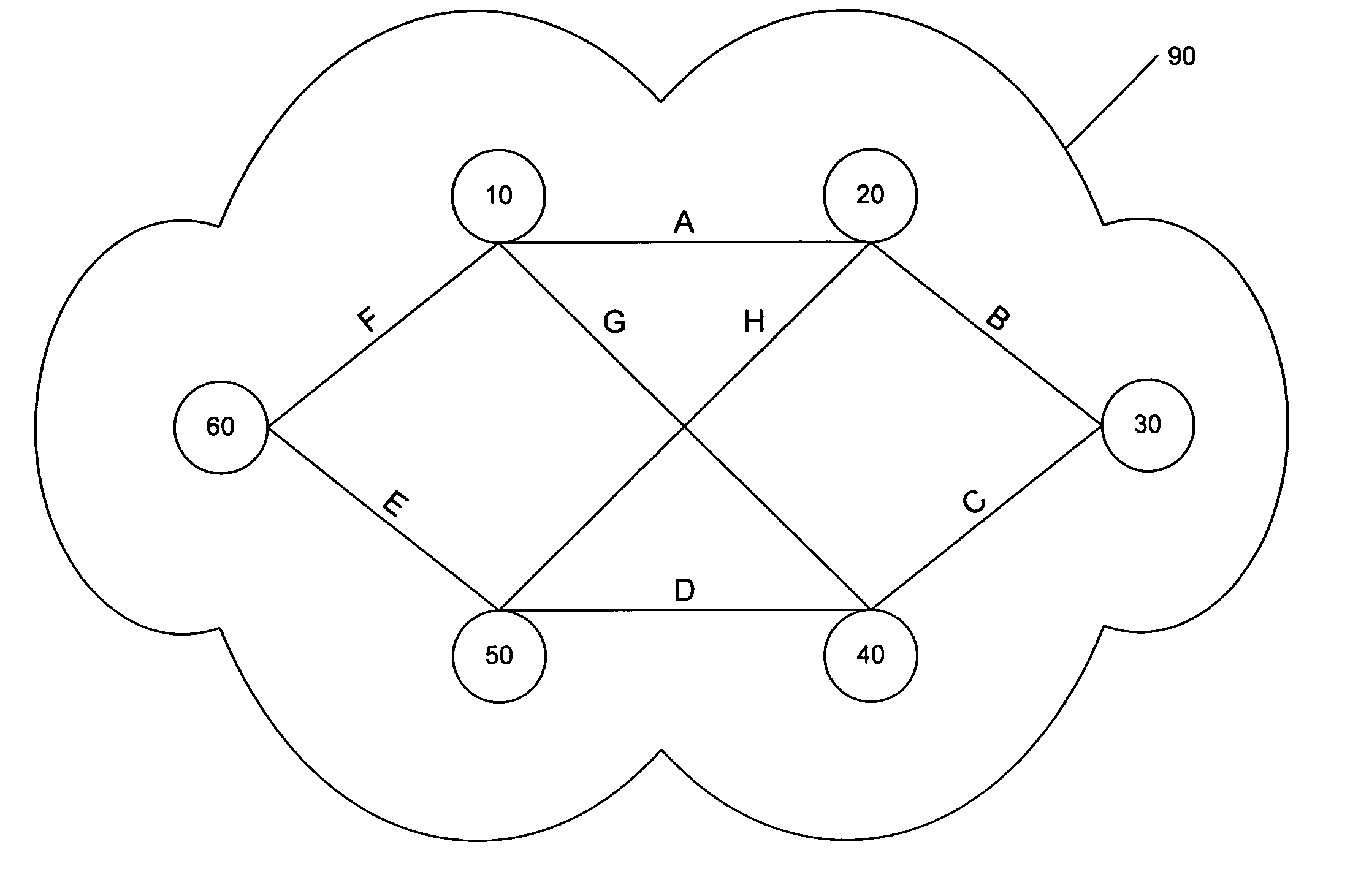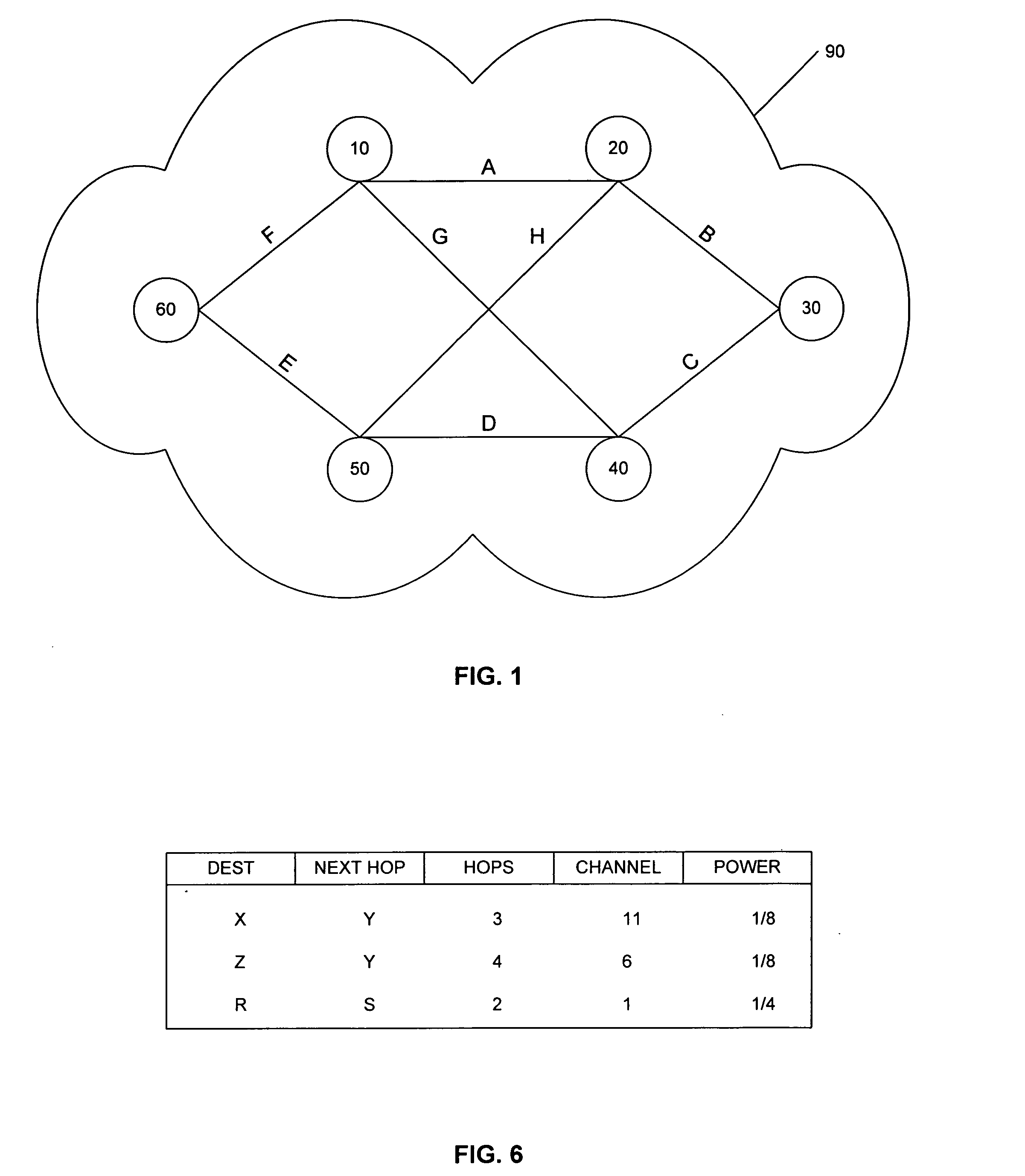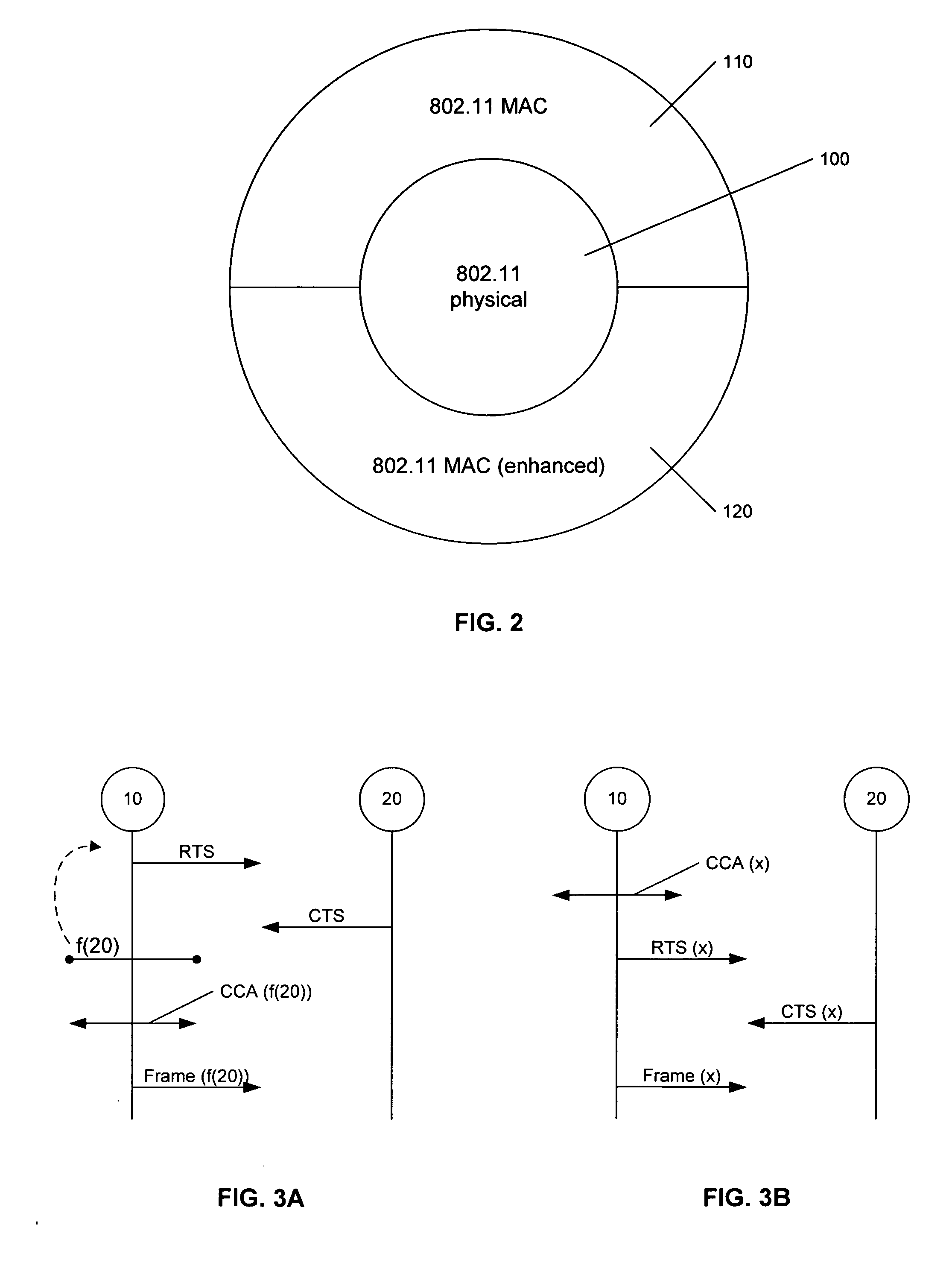Systems and methods for broadband data communication in a wireless mesh network
a wireless mesh network and wireless communication technology, applied in data switching networks, high-level techniques, wireless commuication services, etc., can solve the problems of extremely poor spectrum utilization, low bandwidth utilization, and inability to meet the needs of multi-hop wireless networking environments, so as to reduce congestion and perceived congestion, reduce congestion, and increase throughput
- Summary
- Abstract
- Description
- Claims
- Application Information
AI Technical Summary
Benefits of technology
Problems solved by technology
Method used
Image
Examples
Embodiment Construction
[0020] Certain embodiments as disclosed herein provide for systems and methods for reducing congestion in an ad hoc wireless communication network. For example, one method as disclosed herein allows for a transmitting node to send the frames of a data communication over a plurality of channels in the wireless communication network, thus significantly reducing congestion through the increased use of spectrum.
[0021] After reading this description it will become apparent to one skilled in the art how to implement the invention in various alternative embodiments and alternative applications. However, although various embodiments of the present invention will be described herein, it is understood that these embodiments are presented by way of example only, and not limitation. As such, this detailed description of various alternative embodiments should not be construed to limit the scope or breadth of the present invention as set forth in the appended claims.
[0022]FIG. 1 is a network di...
PUM
 Login to View More
Login to View More Abstract
Description
Claims
Application Information
 Login to View More
Login to View More - R&D
- Intellectual Property
- Life Sciences
- Materials
- Tech Scout
- Unparalleled Data Quality
- Higher Quality Content
- 60% Fewer Hallucinations
Browse by: Latest US Patents, China's latest patents, Technical Efficacy Thesaurus, Application Domain, Technology Topic, Popular Technical Reports.
© 2025 PatSnap. All rights reserved.Legal|Privacy policy|Modern Slavery Act Transparency Statement|Sitemap|About US| Contact US: help@patsnap.com



